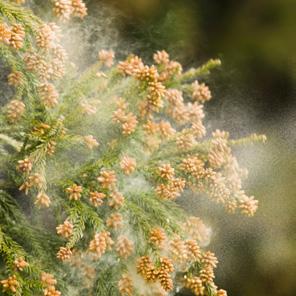
1 minute read
Managing Your Contact With Pollen
Spring allergy season begins with pollen released by trees. Grass pollen appears later in the spring. Weeds release pollen in the late summer and through the fall. There are apps that track local pollen counts to help people manage their exposure. On days when pollen is high, take these actions to reduce pollen contact:
• Check pollen counts daily and plan outdoor activities on days when pollen counts are lower.
• Keep windows closed.
• If possible, use central air conditioning with a CERTIFIED asthma & allergy friendly® HVAC filter.
• Wear sunglasses and a hat or other hair covering when outdoors.
• Take a shower and wash your hair before going to bed (if your hair was uncovered outside).
• Change and wash clothes after outdoor activities.
• Dry laundry in a clothes dryer or on an indoor rack, not on an outdoor line.
• Wipe pets off with a towel before they enter your home.
• Remove your shoes before entering your home.
• Wash bedding in hot, soapy water once a week.
• Use a nasal rinse to flush out inhaled pollen.
There are also options available to prevent or treat allergy symptoms. Some of these treatments work best if taken before allergy season begins:
• Allergy medicines – such as antihistamines
• Nasal corticosteroid sprays
• Immunotherapy – shots or tablets available as a long-term treatment that can help prevent or reduce the severity of reactions
Talk with your doctor before allergy season begins about which treatment is right for you.
Through the asthma & allergy friendly® Certification Program, we have tested and certified products to help you reduce allergens in your home. When you are shopping for products for your home, look for the CERTIFIED asthma & allergy friendly® mark. Visit aafa.org/certified to search for CERTIFIED products and learn more about our program.
More than 50 million Americans are living with nasal allergies and about half of those people have seasonal pollen allergies. AAFA’s yearly Allergy Capitals™ report explores how challenging it is to live with spring or fall allergies in the top 100 U.S. cities. Read the full report at allergycapitals.com


